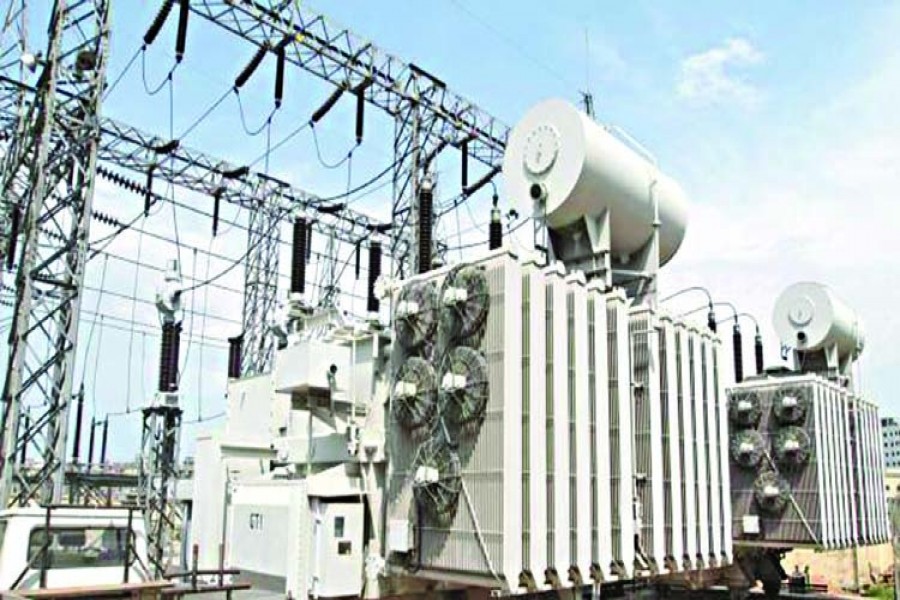Electricity supply has significantly increased in the country over the last 6-7 years, but there is no scope for complacency. Though economic growth continues at an appreciable rate of around 7.0 per cent, many people are yet to come under the electricity network and many, who are connected to electricity, especially in rural areas, don't have the luxury to enjoy uninterrupted electricity. We will be confronted with the gigantic task of dealing with the high demand for energy in the foreseeable future. Alongside this, there are challenges of inefficiency in energy use and our inability to harness renewable energy on the supply side. While imported LNG (Liquefied natural gas) to meet up demand for gas and other fossil fuels to generate additional electricity could be one of the options, it would only exacerbate the ongoing energy insecurity of the country.
In light of renewable energy policy to harness 10 per cent of electricity from renewables, the government has envisioned to enhance the installed capacity of renewables by additional 2896 MW within 2021, of which more than 50 per cent would be from solar. The present national grid with installed capacity of just over 16000 MW, including captive generation, has a paltry 3.10 per cent share of renewables. Installed capacity of renewable energy is only 506 MW consisting of an aggregate of 255 MW from small-scale solar home systems, operated in the off-grid rural areas, representing more than 50 per cent of renewable energy in the country. Among the on-grid installed renewables, 17 MW is from solar and the remaining is almost entirely from hydro, which was installed many years back when renewable energy was not at all a priority. Therefore, the installed capacity of renewables during last decade or so is less than 300 MW and in the prevailing scenario, it seems highly unlikely that we would be able to meet the '2021 target' of renewable energy.
While countries with much less sunlight compared to Bangladesh even generate many times more electricity from solar than Bangladesh, why then Bangladesh can't follow the suit. Is there any invisible hand? No, in reality, it all starts with policy instrument(s). It's the incentive mechanism that has driven down the cost of renewables in the world. As the primary objective of reducing the cost of renewables is achieved, it is now more important in international arena to consider about future like the storage and electric vehicles. Once again, it could be the policy push to quickly reach the top of the learning curve to drive down cost and finally substantiate that electric vehicles are cost competitive in the market.
However, with price of renewable energy still much higher and despite several round of price hikes of electricity as well as fossil fuels, national grid is still subsidised. These twin problems of higher price of renewables and subsidised fossil fuels are plaguing market development of renewables. The 9.0 per cent loan scheme for renewable energy is the only incentive the investors have, but it is not at all attractive in the prevailing market of the country. Therefore, target for renewable energy has produced little tangible results. With only small progress in terms of solar energy, we are at the very bottom of the learning curve to harness renewables.
While we could have been benefited from a national grid, having more diversities with inclusion of more renewables, the way things are moving, it appears that we are heading towards an electricity grid, based on imported energy. The present energy mix also confirms that proposition. During the last decade, share of gas in the energy mix has reduced and conversely, imported oil-based power plants have drastically increased. It is the impression that in the absence of available alternatives, the government had to go for this strategy of increasing power supply, be it from local source or import-based, to feed the growing economy. The policymakers, to be fair, face difficult choices to pick. But the energy issue could become more pressing in the coming days as driving the economy towards the government's vision would require more use of energy than ever before. We must not forget that, people - especially in rural areas, don't have access to quality electricity and many people still remain out of reach of the government's electricity distribution system.
For all practical purposes, a balanced development in the energy sector is the need of the hour. Increasing share of renewables would not only boost the economy in the long run, but also help reduce dependency on imported fossil fuels. It is also important in view of the national commitment to greenhouse gas mitigation.
The process, no doubt, would entail bringing down the price of renewable energy, minimising the technical challenges, including grid integration and reaching the top of the learning curve within the shortest possible time. The early stage would involve the application of economic instruments to help reduce price and attract investments in the sector. However, as much as we realise that we should not expect miracles, it would need an energy policy 'revolution' to realise the notable contribution of renewable energy in our electricity system. The policies would need public support although those may be important. Another thing worth noting here is that choosing the right policy instrument, developing the necessary framework conditions and application of the instrument would take time.
Shafiqul Alam is an International Climate Protection Fellow at Ecologic Institute,
Berlin, supported by Alexander von
Humboldt Foundation, Germany.


